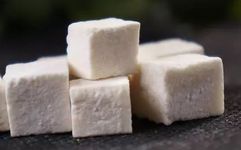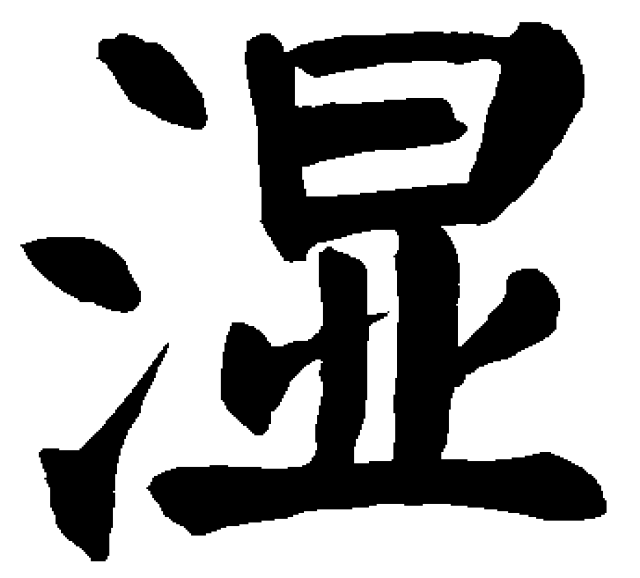
Excessive internal dampness is not a pleasant condition, manifesting in symptoms such as difficulty urinating, edema, phlegm retention, dysuria, leukorrhea, damp bi syndrome, and eczema, all of which are indicative of dampness accumulation within the body. This water and dampness, though different in name, are of the same nature. Water is the accumulation, while dampness is the dispersed form.
To eliminate dampness, there is a particular Chinese herb that is excellent for strengthening the spleen and dispelling dampness; it is neither a plant, nor an animal, nor a mineral, but rather has a unique source—fungus.


Image source: Huaban.com, self-processed
“Poria” is classified as a superior herb in the Shennong Bencao Jing, known for its strong diuretic and damp-dispelling effects. It is neutral in nature, with a sweet and bland taste, suitable for use in both cold and hot conditions, making it a key herb for promoting urination and dispelling dampness.
Poria (Fu Ling), a fungus belonging to the Basidiomycota phylum and Polyporaceae family, is the dried sclerotium of Poria cocos (Schw.) Wolf. The dried sclerotium forms when the fungus reaches a certain growth stage, with hyphae differentiating and intertwining to create a darker, denser mycelial structure.
Poria has a sweet flavor that can tonify the spleen, enhancing spleen and stomach function, making it suitable for spleen deficiency syndrome; its blandness allows it to dispel dampness and promote urination to reduce swelling, and it is slightly more effective than coix seed, widely used for damp accumulation syndromes; it is neutral and does not harm the righteous qi while dispelling pathogens, and it has a calming effect on the mind, suitable for those with heart and spleen deficiency leading to restlessness.
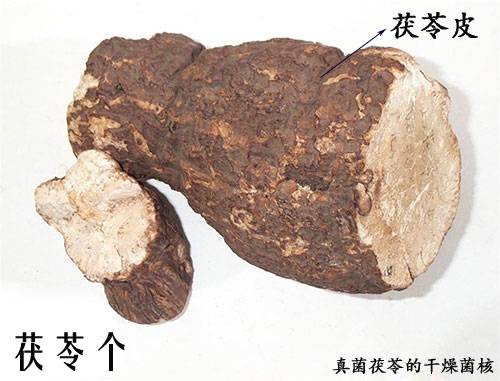
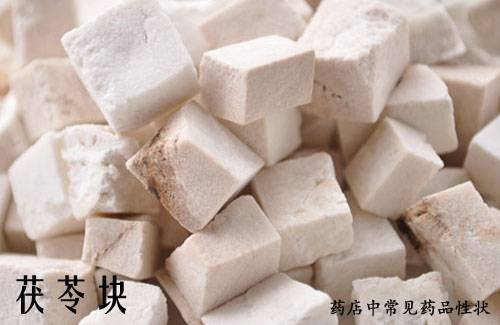
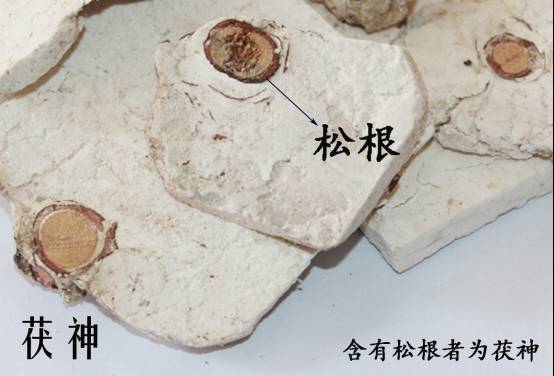
Image source: Internet, self-processed
Poria can be cultivated or wild; cultivated varieties have a higher yield, predominantly from Anhui, hence called “An Ling”; Hubei also has significant production; wild varieties are mainly from Yunnan, known as “Yun Ling,” with Yunnan varieties generally being of superior quality.
Fresh Poria is processed through sweating and then air-dried to obtain “Poria pieces,” while the skin is referred to as “Poria skin”; the Poria sold in pharmacies is often cut into square or rectangular pieces, known as “Poria blocks”; those containing pine roots are called “Fu Shen”; after removing the Poria skin, some may show a light red color internally, referred to as “Chi Fu Ling”; the white part after cutting away Chi Fu Ling is called “Bai Fu Ling.”
To add a few more words
Depending on individual needs, Poria can be combined with coix seed, lotus seeds, and other ingredients for decoction; however, due to Poria’s firm texture, it requires a longer cooking time; alternatively, it can be powdered and taken as a decoction.
Dampness can be persistent and difficult to resolve, often accompanied by other external pathogenic factors, leading to syndromes such as wind-damp, cold-damp, and damp-heat. In addition to relying on dietary therapy and medicinal treatment, maintaining regular exercise, avoiding raw, cold, sweet, and greasy foods, steering clear of damp environments, and adhering to a relatively regular lifestyle can greatly benefit the elimination of dampness and overall health.
Technical support: Jinshi Caomu
A public account that publishes “interesting” and “natural” news about Chinese medicine
Previous highlightsDISCOVERY
● Listening to the Rain Radio | A Letter as if Meeting
● Opening the Skylight | Spring Breeze Blows, I Wait Alone for You
● Countdown to the TCM Green Plant Adoption Activity: 5 Days!
Source: Jinshi Caomu
Text and layout: Li Yuting



